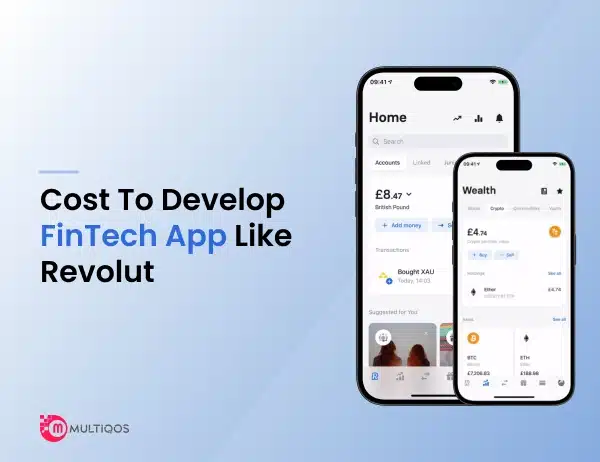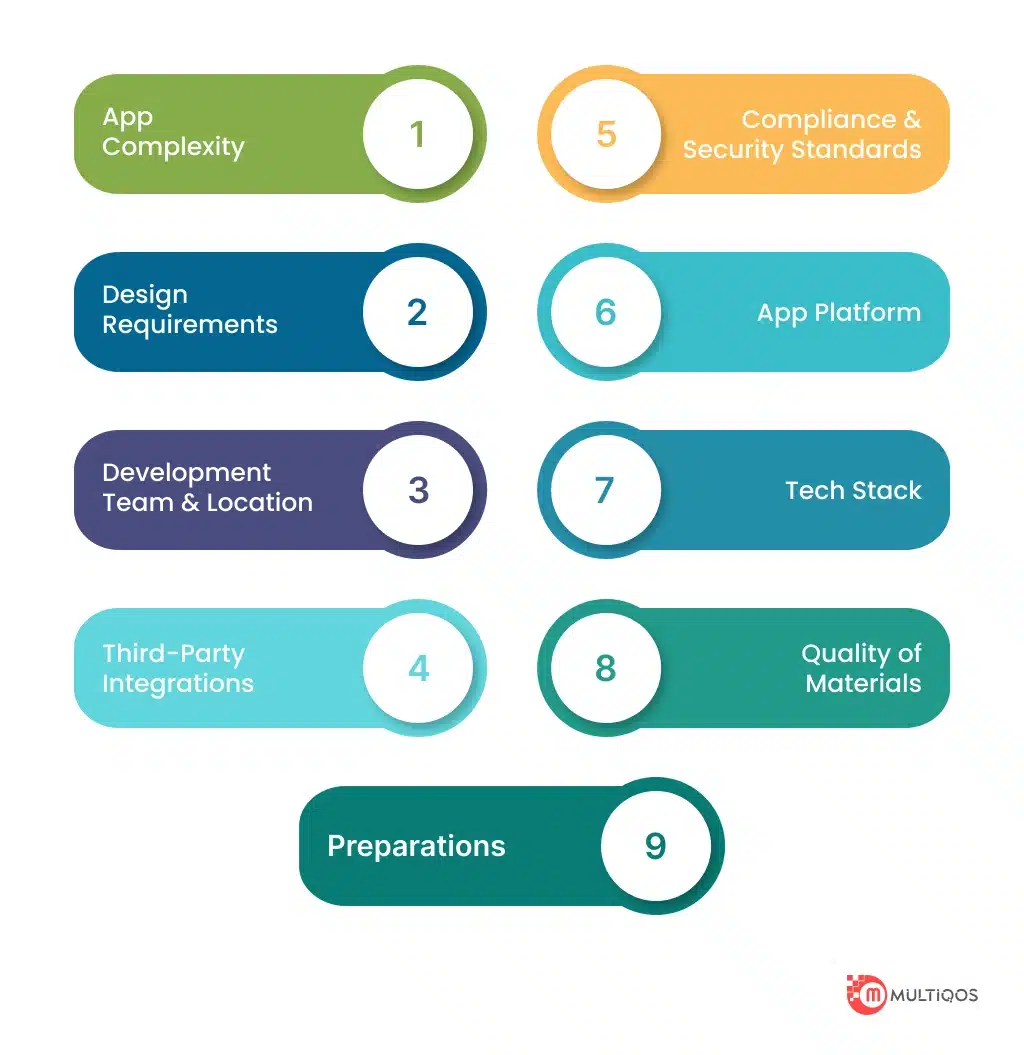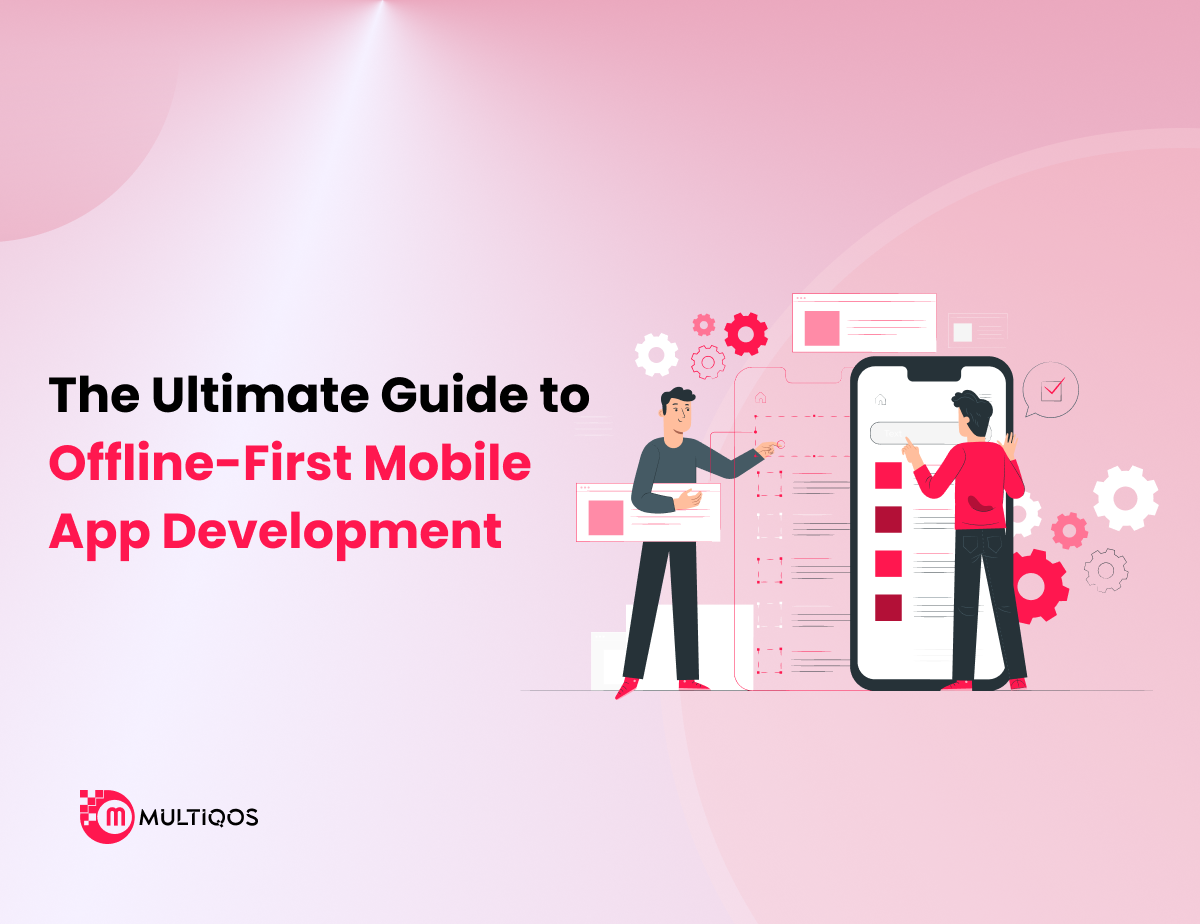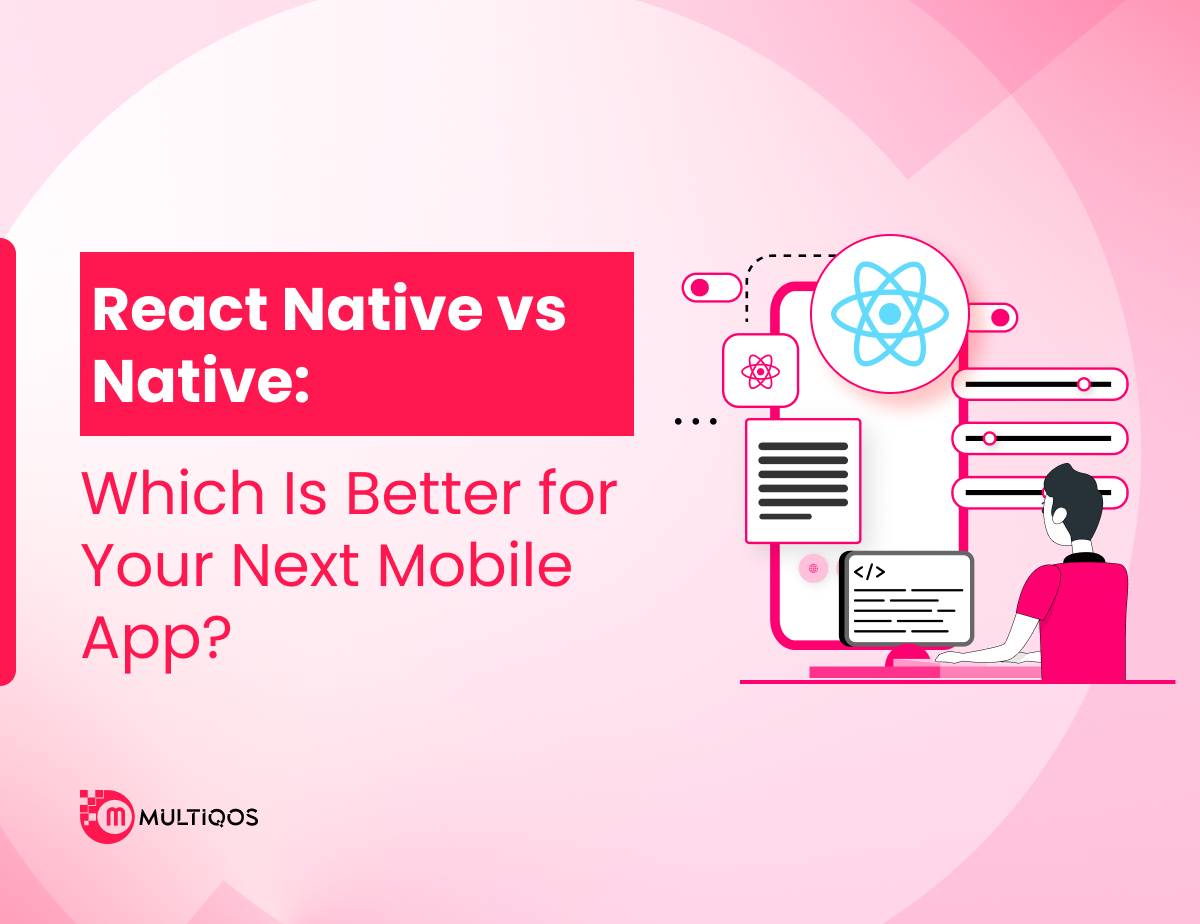The Cost of Developing a FinTech App Like Revolut: A Comprehensive Guide

Introduction
The use of finances in technology has enhanced the comfort in our day to day lives in the following ways. They include having to spend long hours standing in lines to pay for bills, establishing new accounts and conducting general transactions due to the existence of digital banks.
These applications offer convenient and unique solutions that enable companies to deal with these issues and succeed in the highly competitive environment of the contemporaneous global market.
These technologies create new tools for navigating business operations, which leads to increased financial freedom for companies and faster growth.
Mobile wallets in particular are new forms of services that have improved the functionality of Revolut, which gives customers the opportunity to transfer funds abroad using the recipient’s data such as name, phone number, email address, and others.
As the fintech landscape continues to evolve, many entrepreneurs and businesses are eager to develop their own fintech apps, but the question remains: how much does it cost to build an application like Revolut, specifically in the fintech area?
This blog will help you navigate through the main game changers influencing cost when developing a successfully functional FinTech application, such as Revolut, and other key factors required for the application to thrive.
Let’s dive in!
Understanding FinTech Innovation Like the Revolut App
FinTech app development refers to the processes of conception, design, implementation, and deployment of applications that offer innovative solutions in the financial sector.
Most of these apps make use of the new technologies in enhancing the ability of the user to manage finances and perform transactions. This expansion and innovation have led to a-rise of an incredible 380% in app downloads more particularly for the particular year coming at 5.3 million in 2019 to 26 million in 2023.
Mobile application of Revolut has garnered significant customer admiration because, through its smartphone application, the company offers a broad range of financial services.
This consists of the following; mobile wallet where customers can transfer funds to an international recipient using the name, phone number or email address of the recipient.
It has become a utility that enables users to send money, withdraw money for instance through an ATM, make purchases with a virtual card and many more.
If you want to develop a successful FinTech application, there is nothing else that should be more effective than a proper development strategy and a high level of qualification of the dedicated developers and other specialists.
Features to Consider When Building a FinTech App
The creation process is always initiated by a comprehensive examination of the needs that would help define Revolut’s capacities. By adhering to the existing industry standards as well as strictly following a set of requirements, the team can provide the audience with a set of features.
For purposes of analysis, let’s use Revolut as a case study for organizations that have decided to deliver digital financial services.
- Multi-currency accounts and multi-currency transactions: Revolut is designed so that users of the application can keep and exchange multiple currencies; therefore, it is appreciated among travelers and companies.
- Debit cards and ATM withdrawals: Revolut provides early access to a physical debit card that users can use to withdraw cash through the use of ATMs and merchants’ points of sale and terminals across the globe.
- Budgeting and saving tools: It provides capabilities for tracking amounts spent, setting and estimating goals for savings, and general automatic saving abilities.
- Cryptocurrency trading: With Revolut, users can purchase, sell, and store various cryptocurrencies, including Bitcoin, Ethereum, and Litecoin.
- Insurance and Premium Features: Revolut offers various insurance premium features like travel insurance, telephone insurance, unlimited foreign currency, and high ATM withdrawal limits.
- Open banking and integrations: At the moment, Revolut has open banking APIs that help third-party developers work with the solution and offer users access to a wide range of services related to personal finance management.
These FinTech app features are aimed at providing users with solutions to efficiently control their money and the opportunity to use as many types of financial services as possible without the necessity of having several accounts or applications.
Factors Influencing the Cost to Develop a FinTech App Like Revolut
Cost of developing a FinTech app similar to Revolut depend on various factors. Knowledge of such factors can enable you to undertake a projection of the overall funding that you are likely to necessitate. This is understandable, so let’s consider these factors to better appreciate how they influence the level of development cost.
1. App Complexity
It is difficult to ascertain the exact and total cost of creating a FinTech app as it depends on many factors which include the application’s complexity. The cost for basic apps with the simplest financial services will be much cheaper to develop. On the other hand, complex platforms with extra components such as multitudes of currency accounts, investment facilities, a budgeting feature, or artificial intelligence personal finances, will cause a drastic boost in development costs.
2. Design Requirements
It becomes essential to design the app pertaining to the FinTech sector that encompasses the experience that the app offers. Its accuracy and semi-automated processes require effective and clear user interfaces and navigation to be prioritized. This may mean recruiting the services of designers in the field of UX/UI, the creation and testing of prototypes, and feedback from users during the process of repeatedly improving the design. While making it complicated, the basic design can also add up to the price, but it is worth it if the usability and engagement are considered.
3. Development Team and Location
Some of the factors that affect the cost of development of this software include the team and the location of that team. While establishing contact with complex and skilled developers who have knowledge of FinTech app development, one can admit that the price per hour may be slightly higher, however, the outcome would be much better.
Such an approach can bring credibility to the development process because it can be very effective when it comes to gaining access to the expertise of other specialists, speeding up the work, and increasing the overall efficiency of the project. However, the price differs depending on location, and this has become the main challenge among clients.
4. Third-Party Integrations
FinTech apps very often need to integrate with other services and/or APIs to perform payment processing, data gathering, or identity check. The integration layers must come each use complexity and thus the integration must undergo testing to gain optimality and security of data. Such integrations may lead to higher development cost than a single implementation across the two systems.
5. Compliance and Security Standards
In the FinTech sector, it is mandatory to adhere to the legal requirements and strict security controls. The additional cost includes compliance with various data protection laws, financial regulations, and global industry standards is incurred but is necessary to retain the confidence of the stakeholders and to avoid legal cases.
6. App Platform
Many factors contribute to iOS, Android, and cross-platform application development costs, but selecting the proper platform plays a decisive role in determining the Timeline. It is a different construct altogether to build a native application for each of the platforms where the users are likely to converge deliberately; however, the cross-platform solutions are more cost-effective, albeit often jarring the functionality and the experience.
7. Tech Stack
Technology itself right from the language, frameworks, libraries, and tools in use also considers the cost. Selecting the right tech stack enhances application performance, easiness of scaling and security, and the UX of a developed application is vital, hence the costs of mobile app development are justified.
8. Quality of Materials
Quality assurance (QA) guarantees that the end product to be delivered or marketed will conform to certain quality parameters as regards to performance, dependability, safety, and user-friendliness.
These QA activities involve rigorous examination of the application through device, platform, and scenario testing in order to identify the glitches that may exist before they are executed. This particular step can lead to higher costs in development, but there are always benefits that include a high quality app.
9. Preparations
Even for the best designed FinTech app, there is need for regular maintenance so that it delivers its intended value. This includes assessing performance, resolution of bug issues, installation of updates or security, overhauling of program code and integration of new functionality.
Continuous advancement is important in order to meet this ever-shifting needs of users of the particular app, and this also ends up adding to the costs.
Estimated Cost for developing a FinTech app like Revolut
Here is a breakdown of estimated costs for developing a FinTech app like Revolut:
| Factor / Integration | Cost Range ($) |
| Basic UI/UX Design | $1,000 – $3,000 |
| Frontend Development | $2,000 – $6,000 |
| Backend Development | $2,000 – $6,000 |
| Database Setup | $500 – $1,500 |
| API Integration | $1,000 – $3,000 |
| Authentication System | $500 – $1,500 |
| Push Notifications Setup | $500 – $1,500 |
| Analytics Integration | $500 – $1,500 |
| Version Control System | $200 – $500 |
| Deployment Setup | $500 – $1,500 |
| Testing and QA | $1,000 – $3,000 |
| Project Management | $500 – $1,500 |
| Contingency (10-20%) | $800 – $5,000 |
| Total Cost | $8,000 – $25,000 |
These estimates can be further adjusted depending on project specifications and/or the chosen development strategies.
Diversities such as types and complexities of a software, the team size, experience and location play significant roles when it comes to the expense of developing a FinTech application like Revolut.
By considering these factors and effectively planning, you will arrive at the creation of an app that is well-received by users, satisfies the set industry standards, and does not go beyond the perceived budget.
How Do You Build An App Like Revolut?
Designing a Fintech app like Revolut is a complex process that needs creativity, the proper technology, and, most importantly, skilled Fintech developers to satisfy users’ demands.
Fintech app development is a complex process that starts from the moment of its conception until it is released and beyond. Let’s delve deeper!
-
Define Goals and Features
Begin by stating the goals of the app, and then define the features to be included based on the market segmentation analysis and user requirements. Some of these may include multi-currency accounts, budgeting tools, investment opportunities, and secure transactions.
-
Build a Team
This involves assembling a talented team of developers, designers, product managers, and specialists in compliance and the law. Work closely together to ensure that the technical implementation of the product is in line with the regulatory standards and the users’ expectations.
-
Design
Design attractive and efficient business interfaces through the use of interface flows and iterative user experiences. Perform a comprehensive user analysis to identify their preferences and usage patterns.
-
Regulations and Compliance
Familiarize themselves with the legal and political environment of targeted markets for financial service offerings. Adhere to standards like KYC, AML, GDPR, and PCI DSS.
-
Development
Leverage mobile development frameworks and backend technologies to create applications that may be scaled and responsive. Ensure that you have a solid back end that deals with user identification, data management, and computation.
-
Secure Data and Communication
Use strong encryption methods, proper authentication methods, and data management policies to protect user data and ensure proper communication between the app and other systems.
-
Testing and Refinement
Perform numerous tests in order to reveal critical bugs, usability problems, and security concerns. Carry out functional testing, security testing, and user acceptance testing to ensure the app functions as designed.
-
App Deployment
Get ready for app deployment through identifying servers, hosting environments, and app store integration. Ensure you adhere to the submission procedures and get all the required permissions before launching the app to the public.
-
Ongoing Maintenance
Actively evaluate and analyze the performance of the app, the users’ feedback, and the competitive environment after the app release. Enhance features, respond to customer support questions or concerns, and deliver new versions that fix issues or are added for better performance, improved security, or compliance with new standards.
How To Monetize An Application Like Revolut?
Many people fail to acknowledge the fact that monetizing a finance app like Revolut is something important in order to make the app pay for its own existence and running.
As more and more users turn towards digital banking tools, including neobanks, it is helpful to have good ways to monetize the application. As the case of apps similar to Revolut reveals, there are several approaches to generating income from an app.
Fixed Commissions:
Of the various possibilities to make money from the app, one can charge the customers a certain amount of money each time they make a transaction using the application.
This fee could be calculated as a proportion of the transaction size or as per transaction frequency. This is typical with the payment apps and is proportional to the number of the transactions done.
Subscription Fees:
As an additional stream of income, you can set monthly or yearly charges for all who want to use the possibility to contact certain services or have more functions for free.
For instance, the world’s leading fintech, Revolut, has a top-tier offering that includes things like travel insurance, airport lounge access, and free foreign exchange. With the provision of this and the following services, Revolut can earn a solid foundation of constant income.
In-App Ads and Referrals:
This can also be achieved through the money made from the sale of products advertised in the app or by offering user incentives for new customers.
For instance, Revolut has a referral program in place where the user can earn cashback for every single client that he or she refers to. Besides, it is implied that Revolut could post advertisements for other sorts of products or services within the application, charging money for this from advertisers.
Business Partnerships:
Another way that can prove profitable to the involved businesses is the added services that one business can offer to the other, such as insurance products or investments.
By partnering with other companies, Revolut can provide more utility as a financial platform and take a fraction of the revenue generated through the application.
Business Tools and APIs:
Finally, seeking revenue through nickel-and-dime businesses that incorporate the app’s financial services into their proprietary systems may also become profitable.
This is particularly helpful if one is involved in an enterprise where such information is required, such as a financial firm or a payment system, for instance, accounting or invoicing applications.
Indeed, the structure of revenue generation based on commissions for the use of services allows Revolut to make money from corporate clients.
Take a Step Ahead with MultiQoS!
This demand relates to the development of FinTech apps, and it is evident that its need will continue to increase. Fallback instruments similar to traditional banking products are now slowing down companies and individuals, and therefore, new generation FinTech instruments are required. Not even central banking institutions around the world are exempt from tapping into FinTech app development services to improve internal business processes and consider innovative methods to reach out to clients. Therefore, if you are thinking of a FinTech business, there is no doubt that you will experience one or some challenges.
However, you can overcome all these challenges if you have the top FinTech application development company working for you. We employ highly trained talent at MultiQoS that can assist in developing the best FinTech solutions in the market. No more hesitating, and let’s start creating the app of your desires together!
Please feel free to contact us to know more about our FinTech app development service.
FAQ on Develop Fintech App Like Revolut
They established that building fintech applications such as Revolut may require an investment of between $10 000 and $ 25 000. Despite this, the cost may rise based on the difficulty level of the application and the specific features and interface design you require.
Depending upon the kind of app you want to develop and the sort of project you have in mind, the time to make a fintech app like Revolut may be slightly different. The duration of development of a basic personal finance tracking tool would range between two to four months, while a more feature-rich financial application can take a few months longer.
Making a fintech app brings several benefits, including:Making a fintech app brings several benefits, including:
- In this case, the process has been taken a notch higher and made to become more convenient.
- Rather, these changes made things more secure, since ensuring that individuals were not able to access the organization’s resources on their own would help protect against possible intrusions.
- Making things work better can be seen to imply the creation of artifacts in business that are better for serving human purposes.
- Organising assistance to ensure decisions are made Delivering timely decisions Assistance in making decisions
We can now turn our attention to the time necessary to create a Fintech platform like Revolut: It could take a few months at least and in some cases it could take a year or even more depending on the complexity of the platform, the functionality that the platform has and the other systems that this platform is required to interface with.
Creating an app like Revolut has its limitations: it must follow certain guidelines; it must be safe; it has to integrate with other systems; and it must relay with multiple concurrent users. To surmount these hurdles one should remember a set of rules, put up some safety measures, and design the app in such a way it has the potential to grow.
Get In Touch







